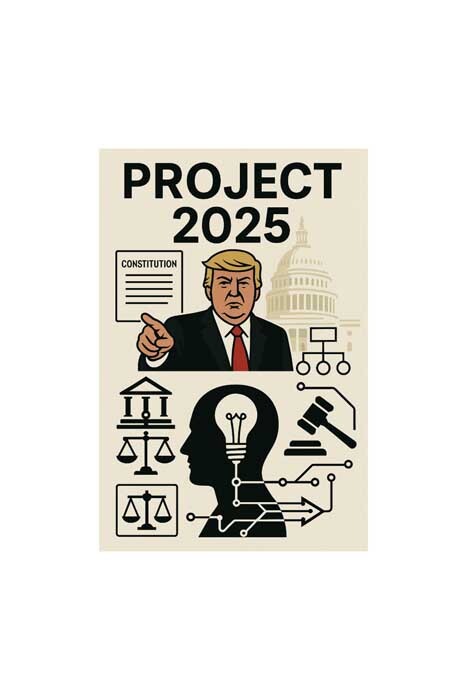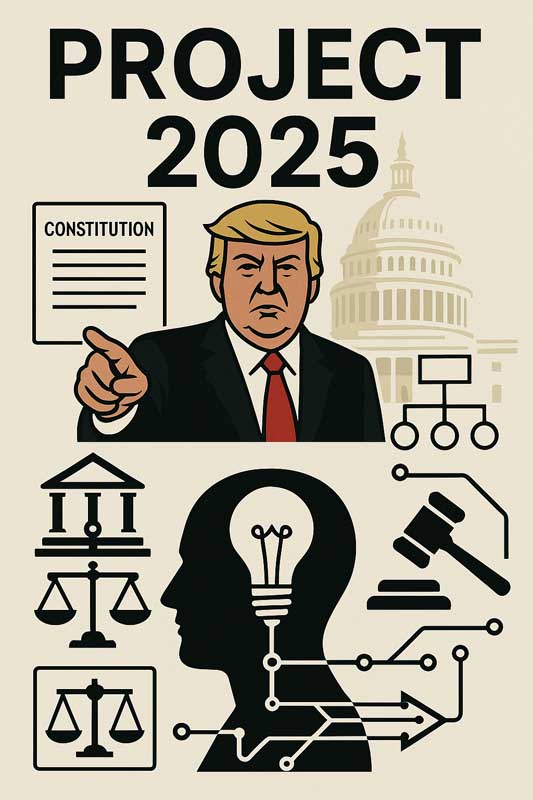News Staff![]() Oct 22
Oct 22
842 views 0 Comments 0 Likes

Inside the Blueprint
Project 2025 isn’t a bill or a secret society; it’s a playbook—thousands of pages of conservative prescriptions for how a Republican administration could consolidate authority in the executive branch, scrub out progressive programs, and move fast on personnel, policy, and process. Drafted by the Heritage Foundation and allied groups, its four pillars are straightforward: a policy manual, a pre-vetted talent pipeline, a training academy, and a 180-day action plan. Think of it as a ready-to-run franchise kit for governing.
Since returning to office in January 2025, President Trump has adopted a series of moves that mirror the Project 2025 method: decide centrally, move quickly, and rewire the civil service first—because who you hire is how you govern. Within hours of inauguration he announced a government-wide hiring freeze, limiting new federal hires and setting the tone for a leaner bureaucracy; later memoranda extended and refined the freeze. This is classic “personnel is policy,” and it sets up broader restructuring.

The clearest signal was the revival—on Day One—of Schedule F, the controversial job classification that allows thousands of policy-influencing federal roles to be reclassified and more easily replaced. Critics call it politicization; supporters call it accountability. Either way, Schedule F is the crucial lever for a Project 2025–style presidency because it enables swapping career managers for ideological loyalists in key nodes of government.
A second thrust has been programmatic: dismantle what the administration sees as the prior era’s ideological scaffolding. New executive orders directed agencies to end federal DEI programs and related preferencing, with follow-on guidance instructing departments to close or repurpose DEI offices. Some of those measures are already tied up in court. The legal wrangling underscores a central reality of the Project 2025 approach: when you govern by executive action, courts become your second cabinet.
A third thrust is border and immigration policy. The White House declared a national emergency and rolled out an expansive enforcement posture. The day-one suite of immigration directives fits the Project 2025 emphasis on asserting sweeping executive control at the border while redefining the terms of entry and removal—again privileging speed and centralized command over incremental rulemaking.
Has Trump “embraced” Project 2025 by name? During the 2024 campaign, he distanced himself from the brand—useful politics when a blueprint’s details are controversial. In office, though, several early moves (Schedule F, hiring freezes, anti-DEI orders, emergency declarations) track the document’s core theory: centralize power in the presidency, reorient personnel, and push big policy shifts through executive action and agency guidance. Labels aside, the operating system looks very much like the one the plan describes.
What comes next if the model holds? Expect further personnel reshuffles using Schedule F authorities; additional attempts to curtail or replace independent-minded units inside Justice, Homeland Security, and regulatory agencies; and more litigation as states, cities, unions, and advocacy groups challenge each move. On the administrative-law front, watch for test cases that lean on Supreme Court trends favoring stronger presidential control over agencies. The strategy is less about passing landmark statutes than about re-wiring the federal government’s control panel—and then flipping the switch.
A fair reading is this: supporters see a long-overdue correction to an unaccountable bureaucracy; opponents see an unprecedented politicization of the civil service and a chill on civil-rights enforcement. Both claims carry pieces of truth. The rhetorical heat can obscure the practical point: Project 2025’s genius—and its risk—lies in its sequence. First, change the people and the power lines; then everything else becomes possible. That’s why the early bursts—hiring freeze, Schedule F, DEI rollbacks, border emergency—matter more than any single headline. They aren’t just policies; they are the operating instructions.

At Desert Local News, connections are everything. We're not just another social networking platform—we're a lively hub where people from all walks of life come together to share stories, spark ideas, and grow together. Here, creativity flourishes, communities grow stronger, and conversations spark global awareness.
Comments